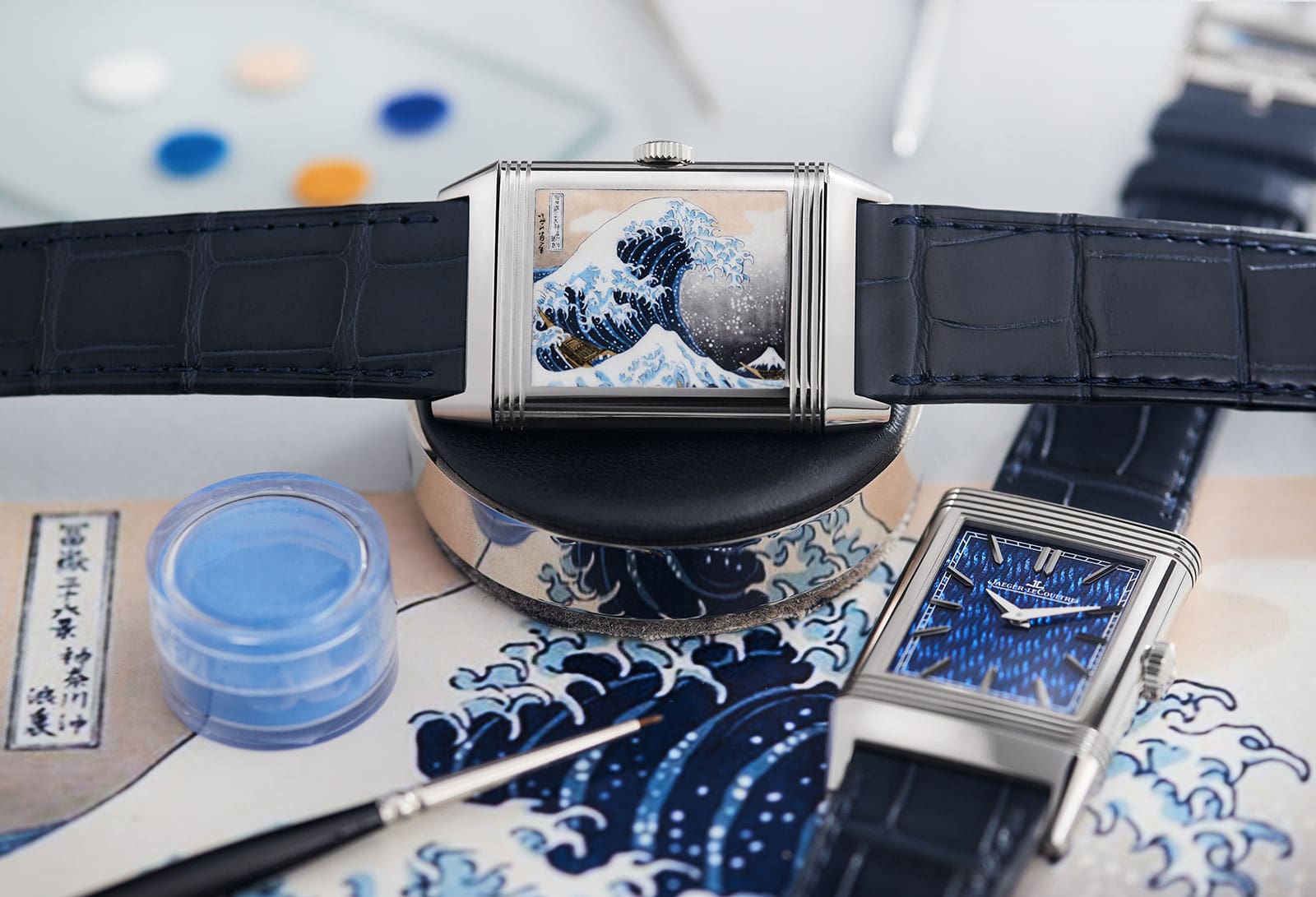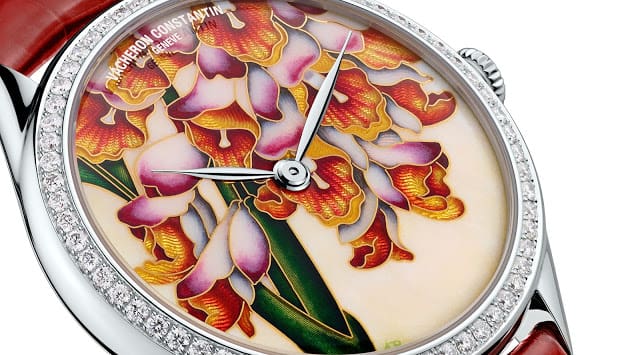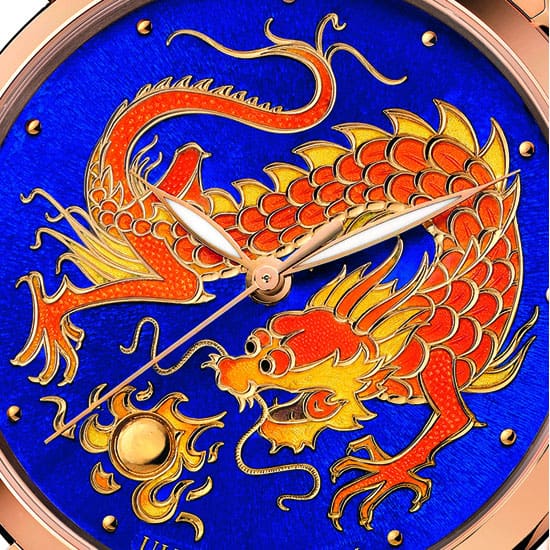Vitreous enamel, also called porcelain enamel is a material made by fusing powdered glass to a substrate by firing, usually between 750 and 850 degrees celsius (1380 and 1560 degrees fahrenheit). The powder melts, flows, then hardens to a smooth durable, vitreous or glassy coating. This definition coming directly from Wikipedia explains little or nothing of the beauty or the artistic prowess that the production of enemaled products entails , in this case watch dials, and at times cases and case backs also becoming canvases for miniature paintings. The earliest known enamelled objects were from Cyprus around the 13th century BC during the Mycenaean period. Six gold rings were uncovered in a Mycenaean tomb decorated with vitreous colored layers fused upon the gold.The techniques are as varied as the challenges that come with each process, but the beauty of the end product; often times even the mistakes, like Ivory soap; can end up being a miraculous and enduring work of art. There are many different and unique types of enameling, grand feu, champleve, cloisonne, flinque, grisaille, plique-a-jour to name just a few. One of the advantages of enamelled objects is their longevity. They do not age and are not affected by light or humidity nor do the colors change over time. But make no mistake enamelling is a tricky business and many things can occur that can completely ruin an object. Enamel is infinitely difficult to control, it may crack or air or gas bubbles may appear leaving tiny holes behind rendering the piece imperfect.Colors are also a challenge to control, but once achieved will remain as such for centuries.For this article we will be concentrating on the three most used techniques in watchmaking today, grand feu, cloisonne, and champleve. I hope you feel the same fascination and appreciation for enamelled objects, in this case watches, as I did while researching this subject.
1.Grand Feu
The technique of grand feu, which in French translates to Great Fire, involves several stages to complete it effectively. The enamel isn’t painted directly on the dial by the artisan, instead applications of more oxides are added on the dial to achieve the desired colors, iron making grays, chromium making green, and iodine to make fiery red hues, etc. are then fired between 800 and 900 degrees celsius several times, each time adding more of the chosen oxide, to allow motifs and colors to gradually appear. The final stage generally involves coating the object with two or three layers of a finishing flux consisting of transparent enamel to protect the work after which it is polished to its full radiance.The end result is an unalterable and refined work of art. A great contemporary example of grand feu is represented in Jaeger-LeCoultres Reverso Tribute Enamel Metiers Rares Reverso. A hand-guilloche dial covered in translucent Grand Feu enamel in blue soothes the eyes and melds nicely with the enamelled painting The Great Wave off Kanagawa on the reverse side done in an almost pointillism style.

2. Cloisonne
Cloisonne or to partition, is a technique in which an outline of the dial design is formed by adding compartments (cloisons), adhering silver or gold strips or wire to form an outline of the design. For this technique enamel powder is made into a paste and then the individual partitions are filled with the paste and fired in a kiln to obtain the desired look. This example of cloisonne enamel by Vacheron Constantin Metiers d’Art Florilege from 2015 is based on plates from The Temple of Flora, published in 1799 by Robert John Thornton, an English botanist. Each dial was engraved by hand on a rose engine then enamel by hand.

3. Champleve
Champleve translated means to lift out or make hollow and that is exactly what this technique entails. Metal is carved away with a burin, a tool with a narrow sharp face at the tip used for the engraving process. These individual cells of the engraving are then filled with the intended enamel. Then the piece is fired until the enamel melts after which it is cooled and the object can be polished to a brilliant lustrous shine. Ulysse Nardin Classico Enamel Champleve Dragon perfectly exemplifies the art of champleve enamel. Vibrant colors wed perfectly with the movement of the Dragon calling back to an ancient time when enamelling was not the lost art it may be considered today.

This is but a minuscule sampling of the types of enameling and application to watches that can be found throughout history and including this new era of resurgence of this intriguing and difficult art form. Patek Philippe, Bovet, Cartier, and other top Swiss brands are throwing their hat in to the enamelled ring creating a new era of enamel artworks.
